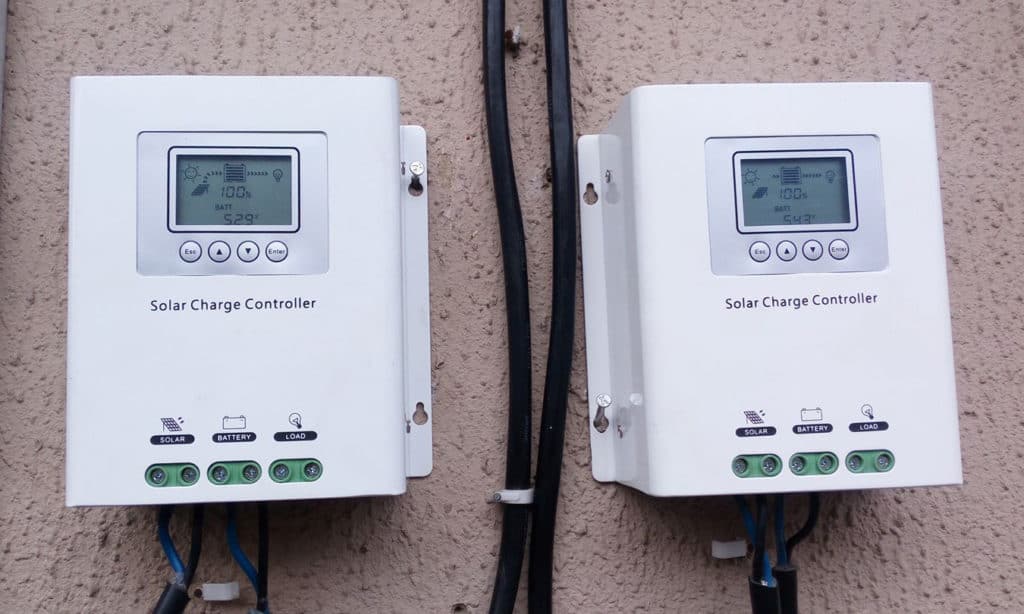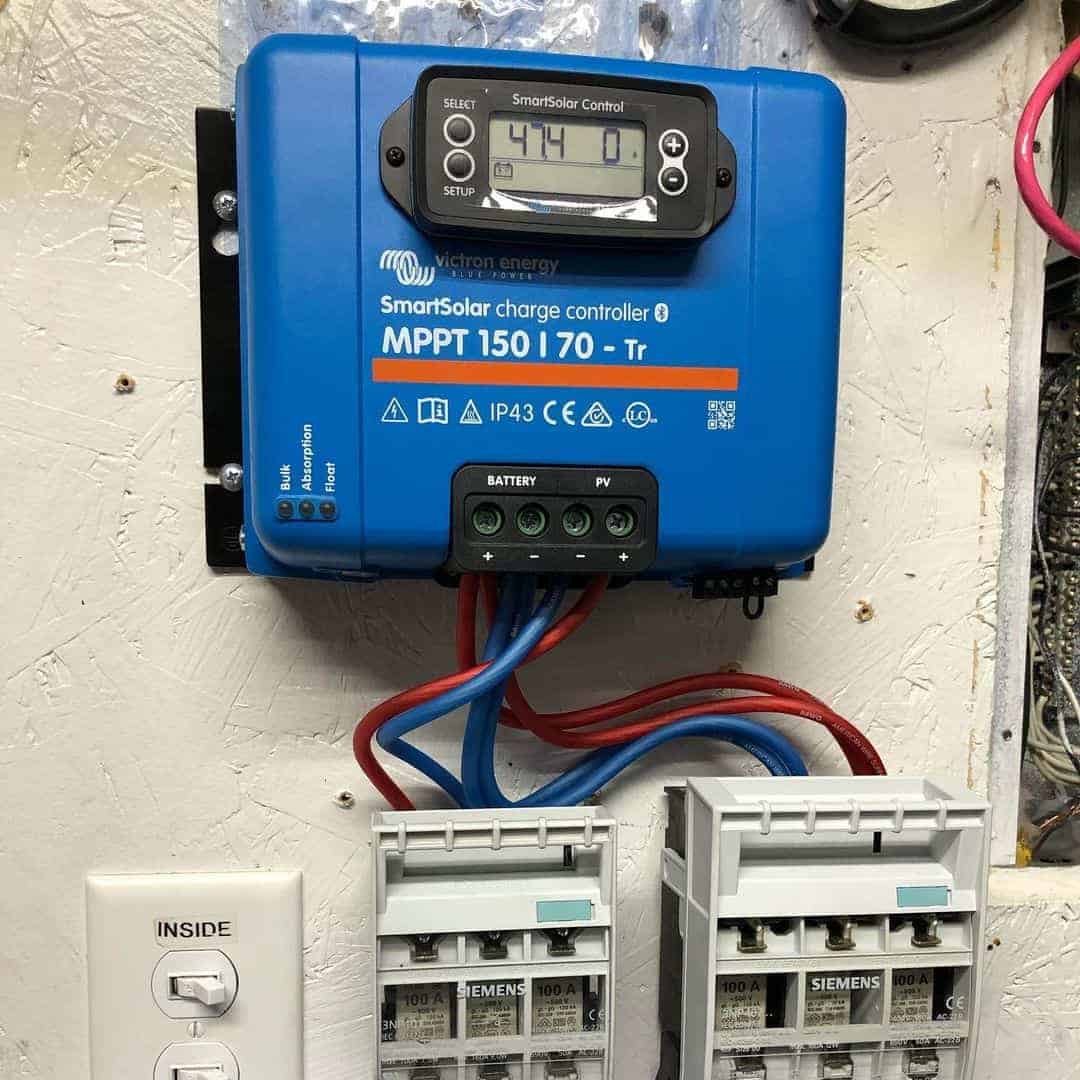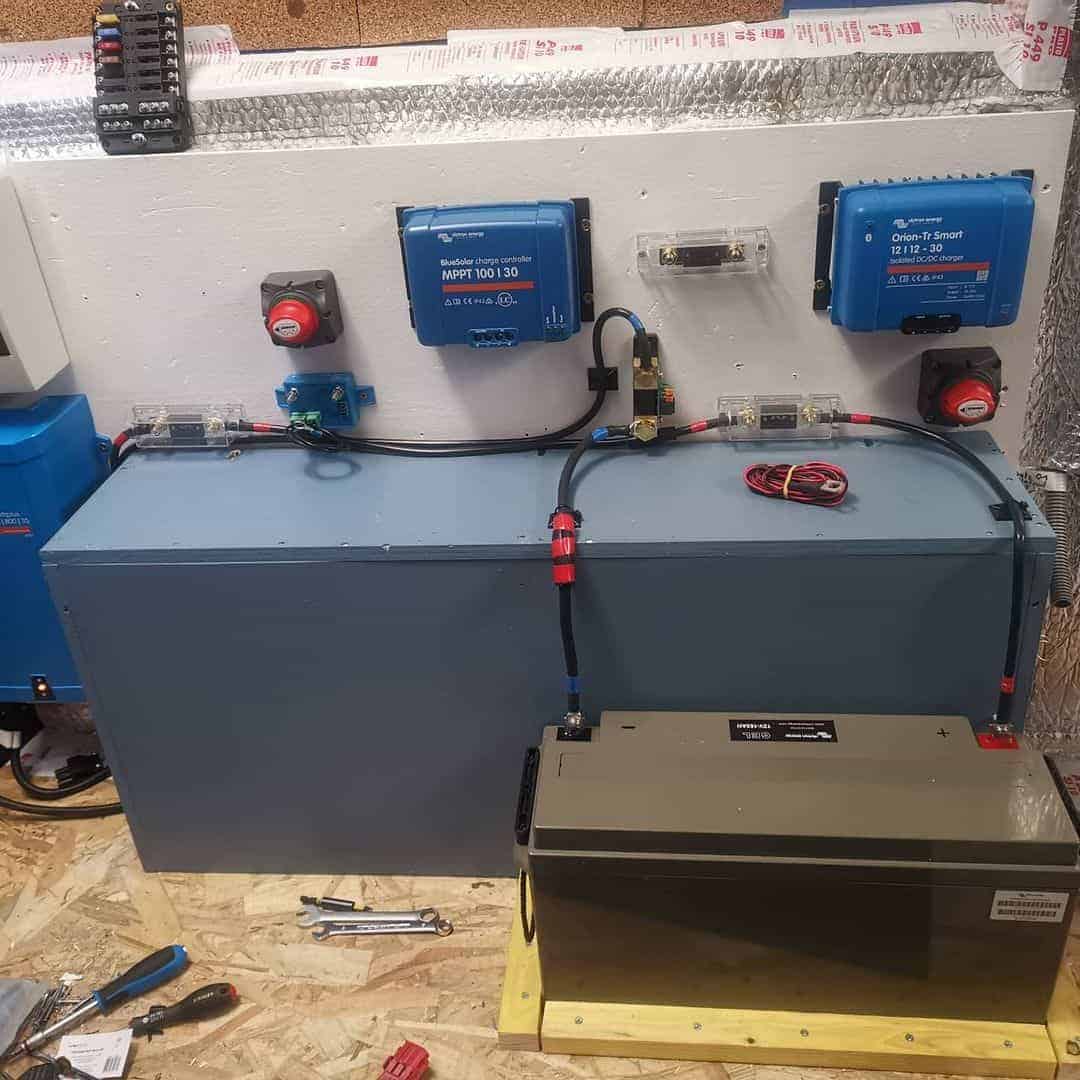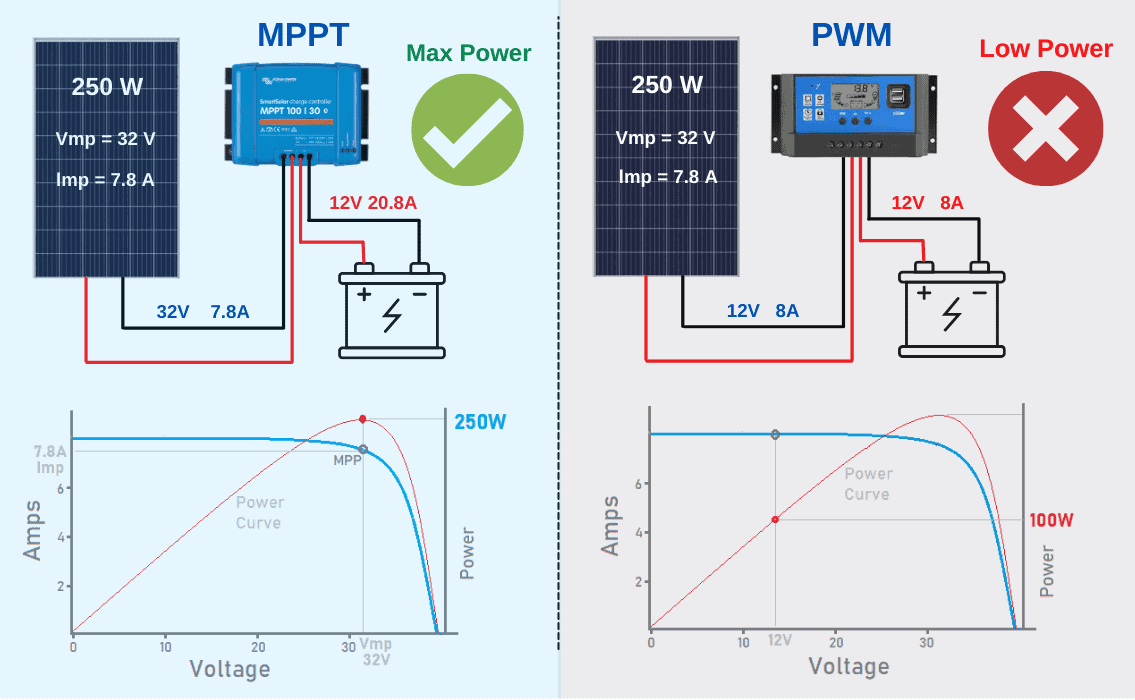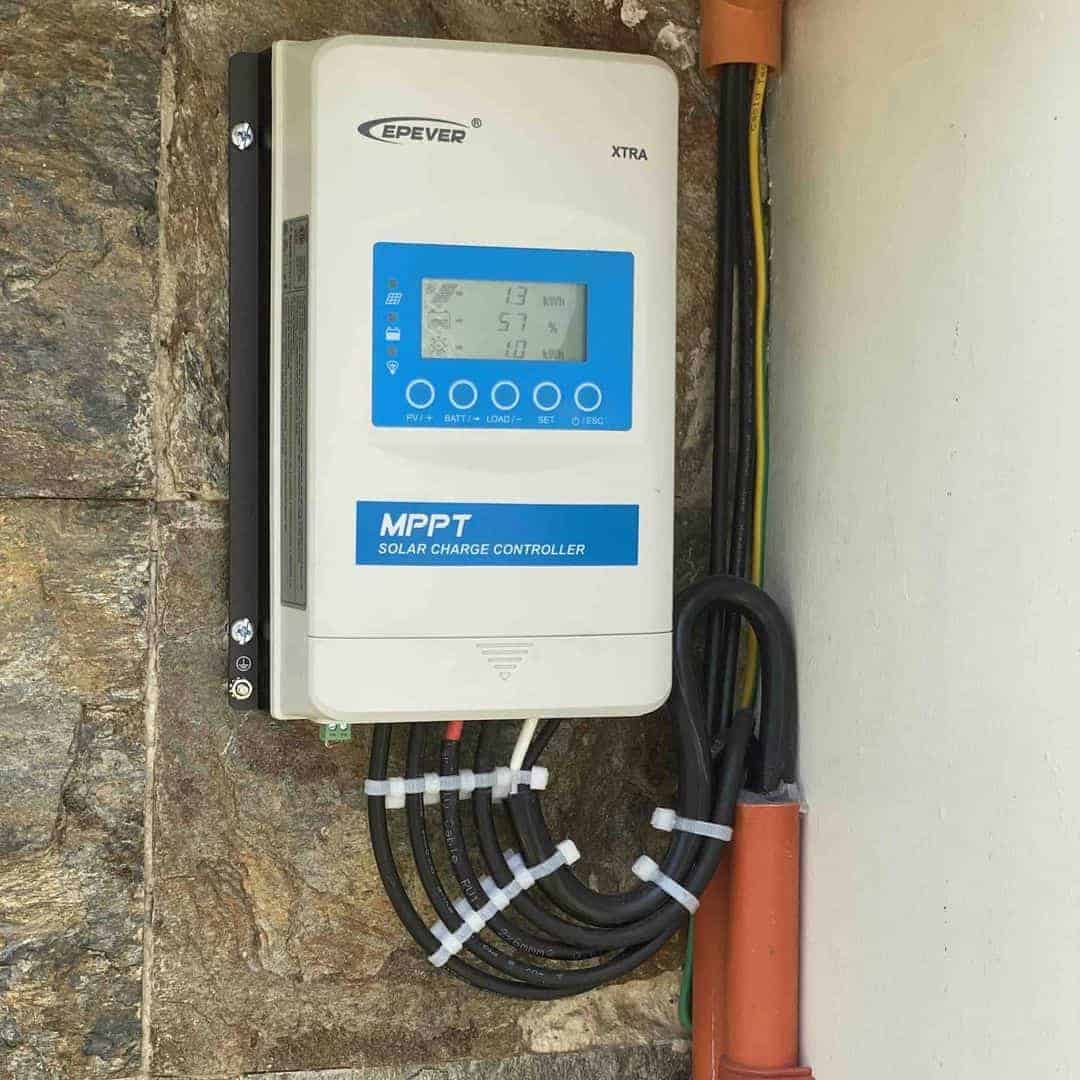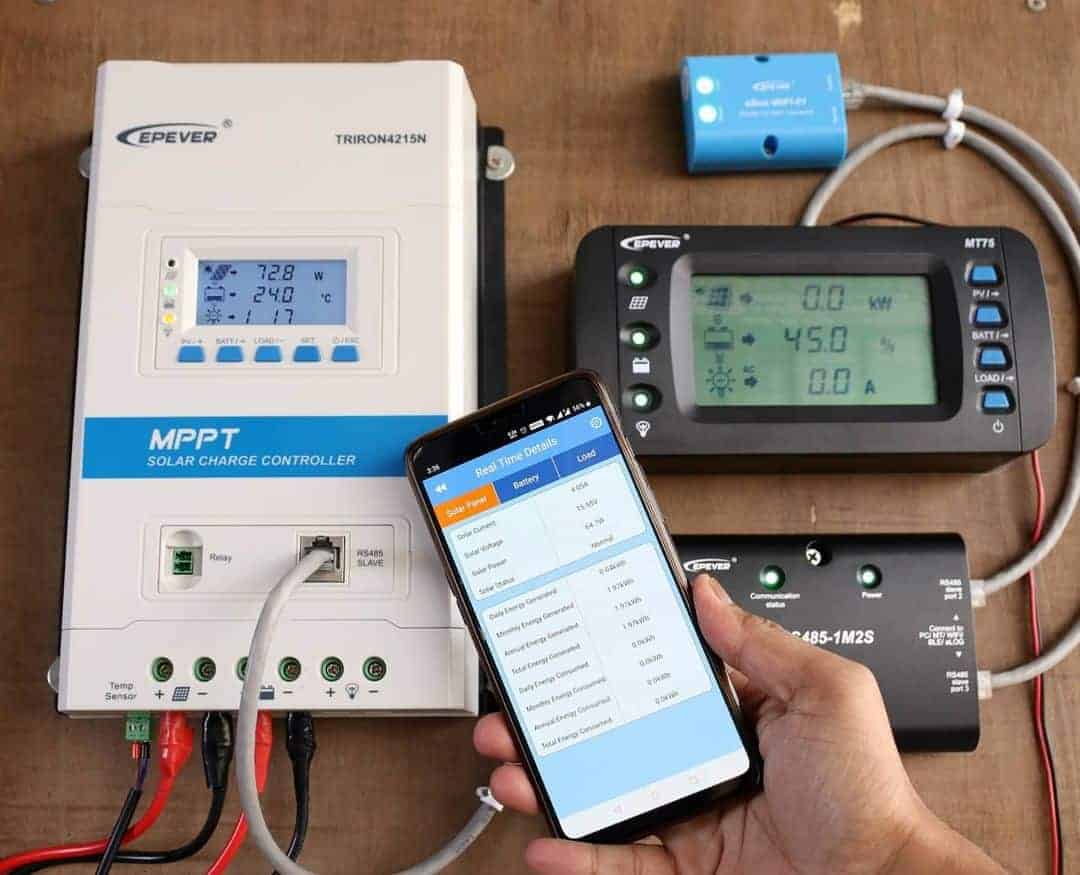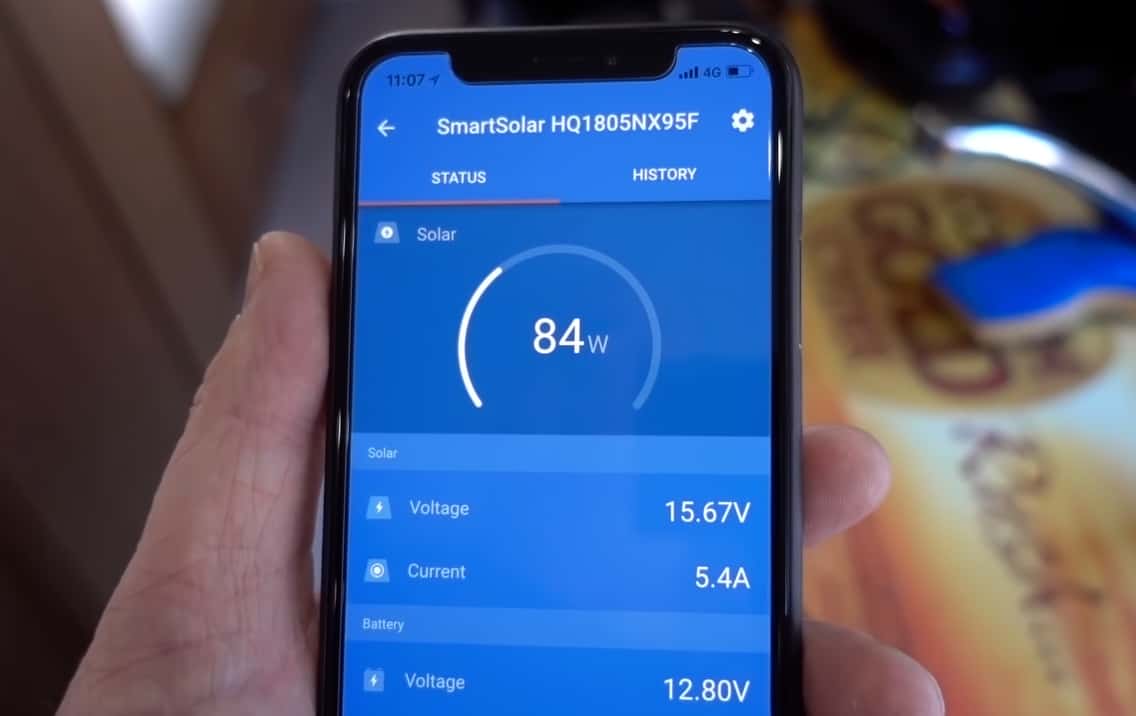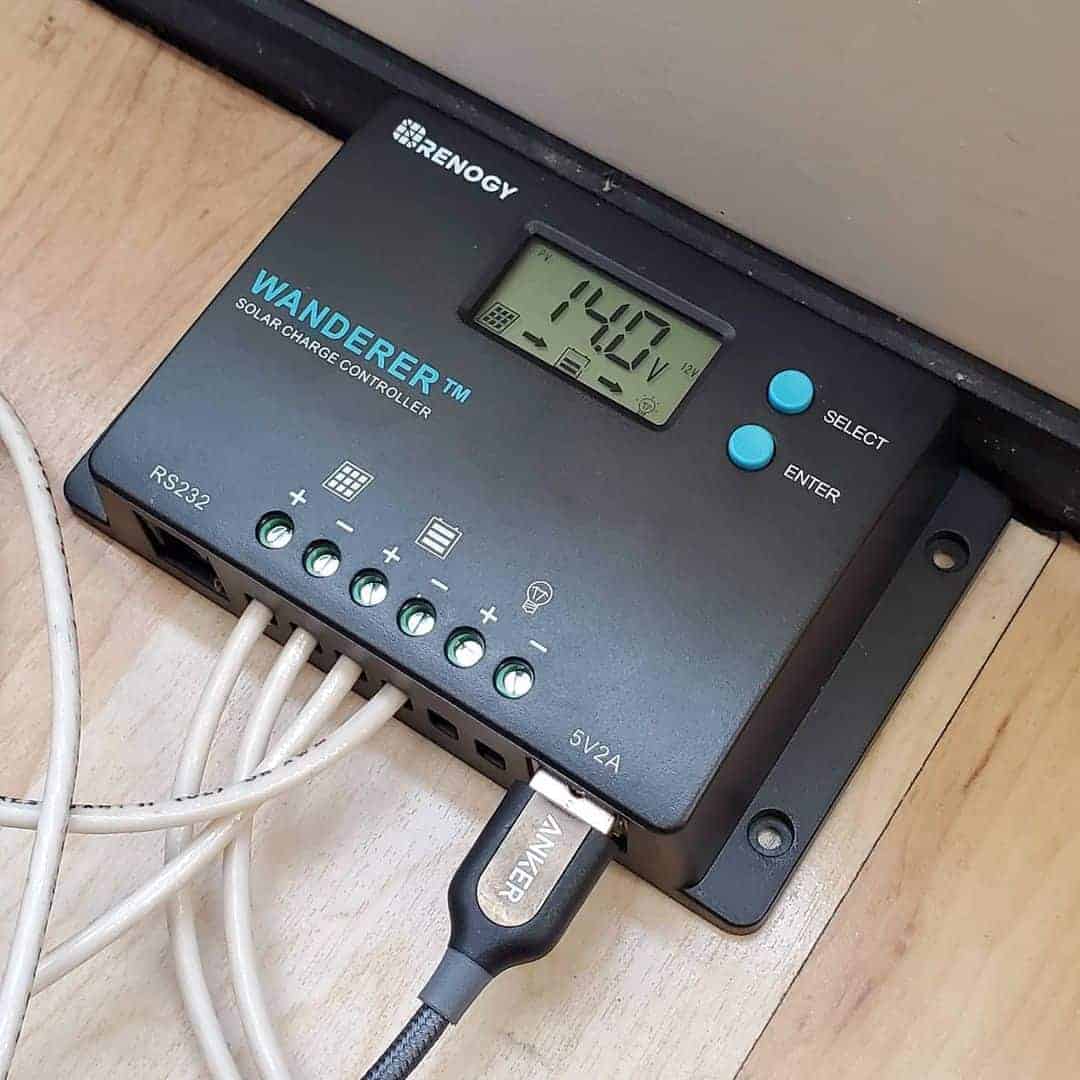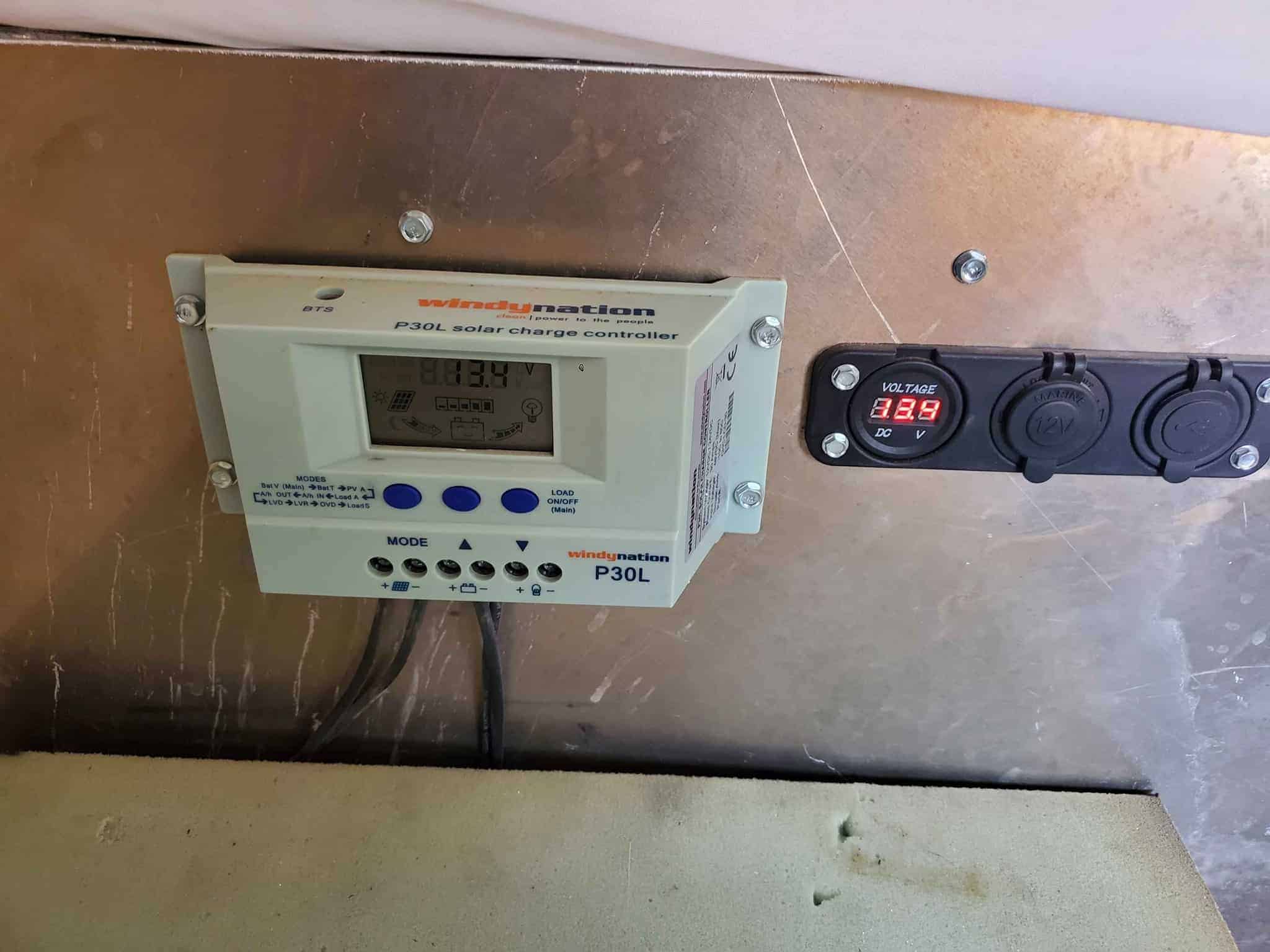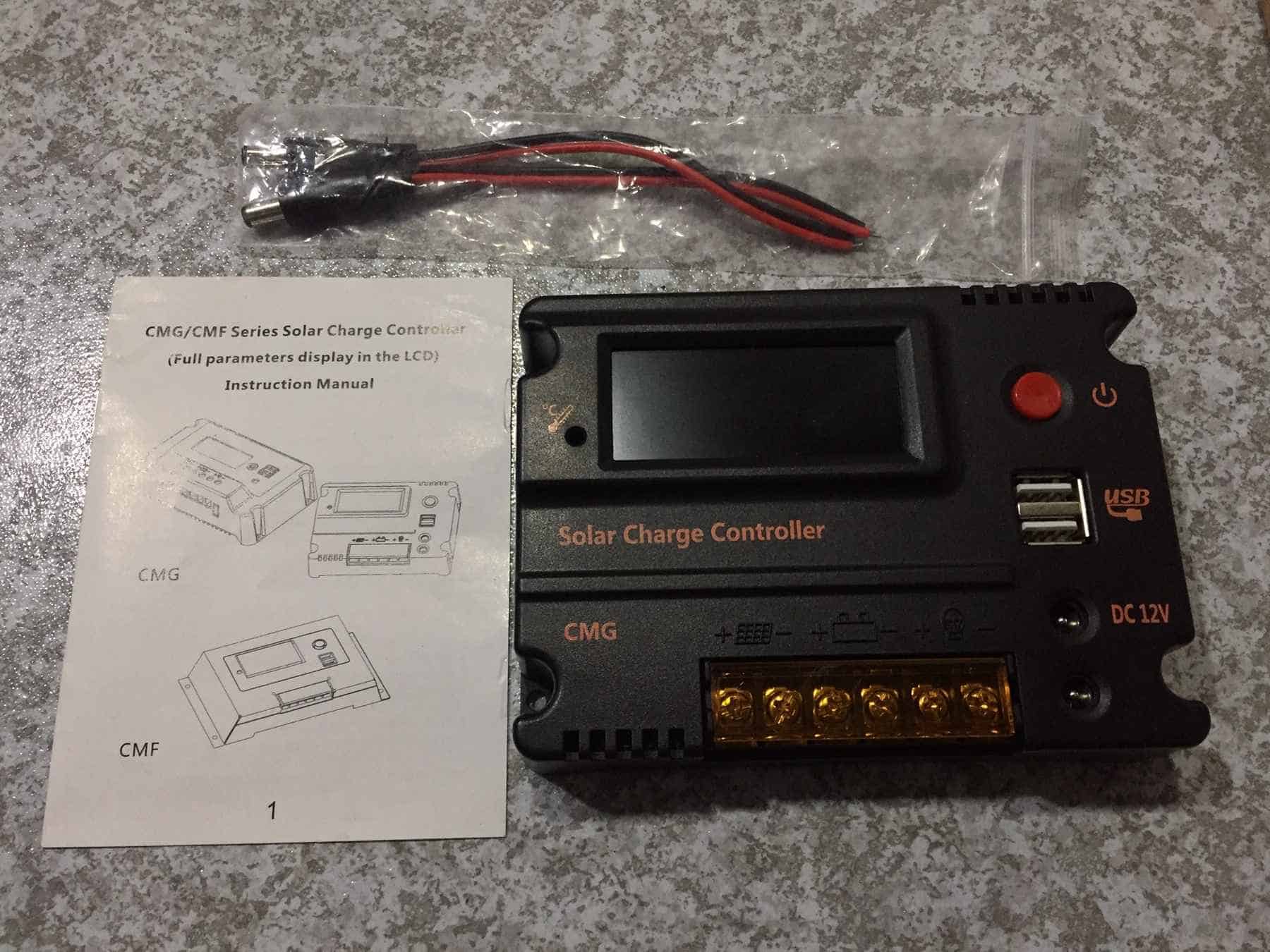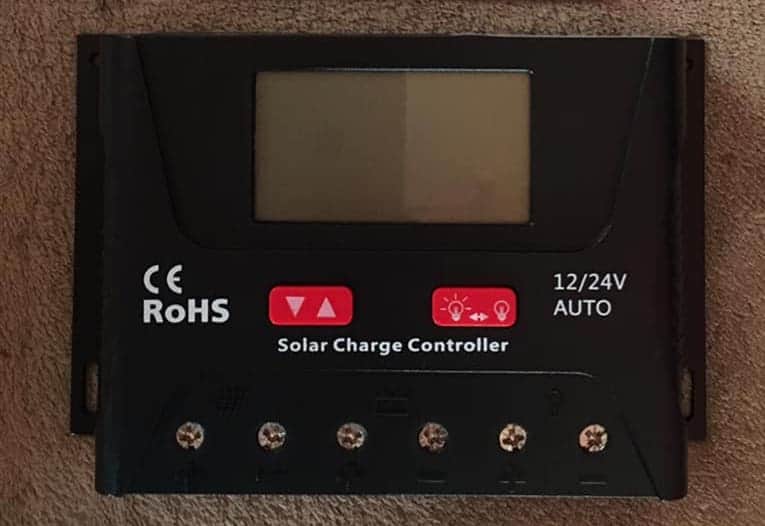As we all know, the use of nonrenewable resources like coal for power production is decreasing for the sake of the environment. Thanks to technological innovation, solar power is becoming increasingly approachable and important. So there are more and more solar panel systems being built.
To make sure that the operation of the system is smooth, solar charge controllers are in big demand. Thus if you are planning to build a solar panel system, you just need a good charge controller.
What to Consider When Buying a Solar Charge Controller
What is a solar charge controller? And how to choose the right one? Are there enough advantages to using it? Let’s think about these questions briefly – and after that, we can look at the factors you need to consider when choosing one.
Charge controllers are commonly used, and an increasing number of equipment types are controlled by these controllers. With the development of technology, they are becoming increasingly popular and advanced because of the significant place it plays in our daily lives.
However, you may not be very familiar with a solar charge controller. It is a kind of controller used to control the voltage of the battery pack. The purpose is to protect the batteries and extend their life when providing power. So although it is less known now, the solar charge controller will lead the trend.
However, choosing a favorable solar charge controller in the market could be challenging because there are always too many products available and you may not be a seasoned user of it. So specific searching may bother you to some extent.
Now let’s look at some of the brief and key points to consider when choosing.
Battery Voltage
Battery voltage is a very important factor that you have to take into consideration. Since the battery voltage is the key to whether the solar panel system can operate well. The truth is that different solar panel systems need different voltages, and there are different battery setups too.
Most battery charging units range from 12 to 48VDC with the base standard of 12 VDC. What’s more, the normal voltages of commercial standard battery banks are 12, 24, and 48V. Meanwhile, if you need a big capacity, there are 60V and 72V options. You can choose a proper one according to the requirements of your individual needs.
MPPT VS PWM
Because different batteries need different types of charging processes. They may have different charging processes and distinctive operations in each stage. So you have to choose an appropriate type. Generally, there are two types (PMW and MPPT models) in the market. PWM is the second generation of the solar charge controller, and the third generation MPPT is considered to be the best model you can buy.
They also have their pros and cons. If you have a relatively small solar panel system, PMW will be a good choice. On the other hand, if you have plenty of appliances that need to be charged safely, then MPPT becomes your first option. MPPT system can deliver the maximum PV power regardless of any change in conditions. You simply need to choose one that matches your requirements.
Display
The display is another factor you need to pay attention to. When using the model, reading the current data on the screen is a necessity. Usually, there are two types: LED, and LCD. As we know, the display using LED lights helps to show some basic information, such as the charging status.
However, those using LCD can give you more specific messages which allow you to know whether the system is safe. While, of course, the prices of the two display types are quite different. You still need to think about your budget.
Maximum Current
Max current can influence the performance of your solar charge controller. So you are suggested to check the maximum current of the model in case it can’t handle some high load devices. People might have distinctive charging demands.
Specifically speaking, standard models support 10 or 20 amps of maximum current. But if you have a need, you can choose favorable models that can perfectly handle 30 amps or even up to 40 amps of electricity.
Remote Access
Some solar charge controllers can be accessed and controlled via APP remotely. This feature provides you with many conveniences and high flexibility. Users who need to go out for a long time may prefer this function. Also, when you are busy in other rooms, you can operate it on your computer or phone.
Data Logging
During the use of the model, it’s unavoidable that the solar panel system might encounter problems or malfunctions. To check the problems and find out the solutions, you may need the help of usage statistics. So if the charge controller is equipped with the data-logging function, you will save much energy by reading the recorded data.
Solar Charge Controller Reviews
1. Victron Energy SmartSolar MPPT 100|20 Solar Charge Controller – 20A
If you are a greener or amateur of solar system installation, you are recommended to try this model. This unit is designed very intelligently and advanced because it is made by a very reliable manufacturer called Victron Energy. It is easy to install or mount.
In terms of its specifications, the unit features a wireless Bluetooth management system, which allows you to control and supervise the solar system through the APP on your cell phone or computer at a remote distance. You can also update the settings wirelessly. This function makes it a perfect choice for many people, especially those who need to go to other places from time to time.
As for the type, this model is an MPPT controller with a set three-step charging process, through which the latest and fastest technological controller plays an important role in protecting the battery, and even extends the battery life.
Besides, the solar charger will collect energy from your solar panels and store it in the batteries. As a cutting-edge controller, the unit maximizes the amount of energy, leading it intelligently to achieve full charge in the shortest possible time.
Apart from keeping the health of the battery and extending its life, the controller will even recharge a badly exhausted battery. It can operate with a battery voltage as low as 0 Volts, provided the cells are not permanently damaged.
Something else you may like is the built-in LED indicators, including ON, OFF, and blinking lights. With the help of the indicating lights, you will know whether the process is on, which stage the charging process is in, and what the problem is when there is a system fault situation. This function is very helpful for all users.
However, the defect is the controller is built shut, which means you can’t replace any component of it. This causes some trouble for users.
In conclusion, although it is hard to fix some damaged components when things happen, it is very functional and intelligent. And there is little chance to go wrong. So you can still think about it.
Victron Energy SmartSolar MPPT 100|20 Manual
Pros
- Built-in Bluetooth– allow wireless management
- Remote configuration– manage it on smartphones
- Battery voltage 12/24V– enough storage
- LED – read the information clearly
- Up-gradable –provide more useful information
Cons
- Built shut – can not replace the components
- Confusing manual – could need efforts
2. Outback FM80 Mppt Solar Charge Controller – 80A (Upgrade Pick)
If you plan to install a solar panel system with a larger power, you will need more powerful charge controllers that can support different panels and gather plenty of energy. The Outback FM80 is an ideal option, for it can meet these two requirements and make your system function well.
One of the most amazing features of this model is that it comes with a large and adjustable charging capacity. That feature makes it workable with many solar panels and big batteries. The unit can deal with several system voltages of 12, 24, 36, 48, and 60V. The model is programmable to charge different capacities of batteries, which offers big flexibility.
What’s more, this unit is an MPPT type, so it can use consistent Maximum Power Point Tracking to find out and keep the maximum power from the PV array, gathering the largest number of the energy generated by the solar panels to recharge the batteries completely.
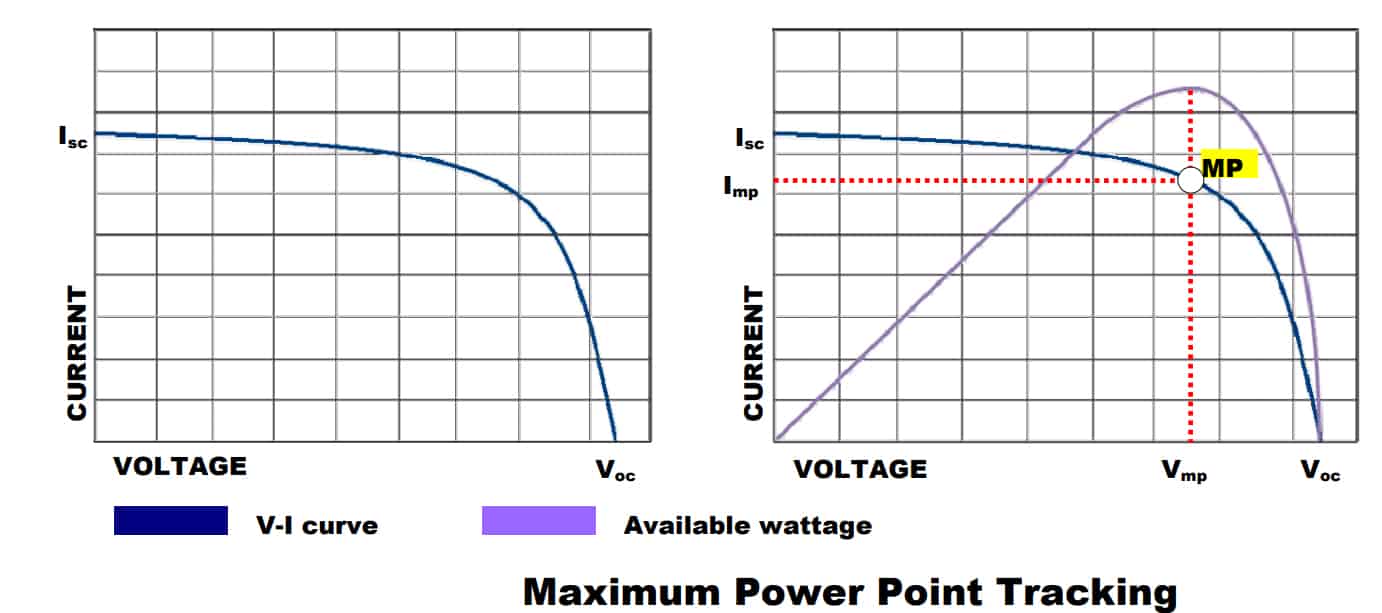
Another feature worth mentioning is that it features data logging. This model can record and log the system statistics for as long as 128 days. That is a wonderful function that could help users get a clear picture of the system running. When there is something wrong or fault in the solar system, people can diagnose the problems by reading these data.
On the other hand, there are negatives too. Some users may complain about the remote monitoring function, which is not very user-friendly.
In a nutshell, despite the troublesome remote management, this model has multiple practical functions, giving you a fantastic user experience.
Pros
- Remote temperature sensor– allows remote management
- Programmable battery voltages – handle different batteries
- 128 days data-logging– help to diagnose problems
- Integrated display – read more useful information clearly
- Rated output current 80A –gather more power
Cons
- Less powerful remote monitor – causes difficulty
- Extra spending on fittings – a big budget
3. Renogy Wanderer PWM Solar Charge Controller – 10A (Budget Pick)
If your solar panel system is comparatively small, or the devices needing to be charged are not too demanding, you should take a look at this model. Renogy Wanderer solar charge controllers have a series of units. The one with a 10A size which has a 4-stage smart PMW charging process is highly recommended.
Regarding the type of this model, as the last paragraph put, this is a PMW system that extends battery life and promotes system performance. Also, it is designed with intelligent protection against reverse polarity, overcharging, short-circuit, and reverse current. Therefore, the unit can maintain the health of the battery and the safety of the system.
Something else we would like to talk about is the surprising display. The controller features a high-quality LCD screen, and there are specific system operations, error indicators, and various load controls. All these settings help the users know the charging process. And you won’t feel confused when there is a situation because you can watch the information on the screen.
Moreover, there are plenty of other practical features too. For example, it has 5V 2A USB ports to charge devices via USB. The size is very small and compact, which makes it easy to install, even if you are an amateur at installation. Plus, it can deal with two battery voltages: 12, and 24V, offering certain flexibility.
But, the hull of this model is made of plastic that can be damaged easily. If you care more about the sturdiness, you may mind this.
Pros
- Compact size– easy to install
- Two programmable battery voltages – handle different batteries
- LCD screen– provides precise information of the charging process
- 5V, 2A USB ports – charge USB devices
- Smart 4-stage charging process –protective and safe
Cons
- Plastic housing – cause damage easily
- Extra spending on LCD – a big budget
4. WindyNation P30L PWM Solar Charge Controller – 30A
WindyNation P30L is another PMW solar charge controller that comes with full digital visualization of a system that serves as a human-system interface, providing the most important information. Users can manage the configuration of the solar system. As you can see, it is designed very user-friendly.
Regarding the voltages, it can handle charging batteries of 12 and 24V, so you can program the voltage according to your battery capacity and the devices that need to be charged. Plus, the PMW solar charge controller can protect the battery from being overcharged or damaged by the solar panel. So the health of your batteries can be guaranteed and the life span of the batteries can be prolonged.
What’s more, there is built-in electronic protection, including overloading, short circuit, reverse polarity, lighting/source, PV panel reverse-current, overcharging, and discharging protection. That protection system is significant for the conservation of the batteries.
Another amazing feature is the display. The model has an LCD digital display that provides much important system information, such as amperage, voltage, temperature, load control, and so on. All this information has clear indications, allowing you to notice any status of the charging process.
Also, there is an included battery temperature sensor that guarantees temperature compensation of the charging voltage, improving battery operation, extending battery life, and reducing battery maintenance.
However, the display only shows Voltage out from it, but not Voltage in it. I guess some users may feel disappointed at it.
To summarize, despite the small shortcomings, it can offer you nice service and provide plenty of practical features.
Pros
- Compact size– easy to install
- Two programmable battery voltages – handle different batteries
- LCD screen– provides precise information of the charging process
- Electronic protection – save batteries
- Battery temperature sensor –temperature compensation
Cons
- No V-in information on the screen – cause dimness
- 1 year warranty – too short
5. Renogy Adventurer PWM Solar Charge Controller – 30A
Renogy Adventurer PWM Solar Charge Controller is made perfectly for off-grid applications. And it can deal with batteries with a voltage of 12 and 24V. And owning to its programmable Lithium charging voltage, the 30amp PWM model can charge most Lithium batteries available on the market. Also, it is compatible with cycle Sealed, Gel, Flooded and Lithium battery options.
What’s more, the Adventurer is a negative ground controller, allowing compatibility with any negative ground system, which is the standard and most traditional method of grounding. Any negative connection on the solar panel, battery, and load can be safely earth-grounded as demanded.
Besides, this unit has a smart 4-stage PWM charging (Bulk, Boost, Float, and Equalization), which is clear and safe. Plus, the ensured temperature compensation can extend battery life and enhance system performance.
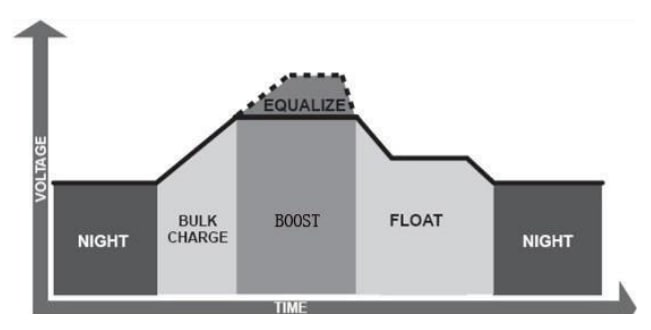
Moreover, there is intelligent protection too to run against overcharging, short-circuit, reverse polarity, and reverse current. That feature largely improves the health of the battery and maintains the safety of the charging system.
Something else you will like is the display. It has an LCD screen that is used to display performance information, disorders, and error codes. With the help of the LEC messages, users can easily read all the matter information, knowing the stages and process well. So when urgent situations happen, people can react immediately and correctly.
Well, the model features a 5V, 2.4A USB port on the front display that can be used to charge small devices like speakers, laptops, and mobile phones. Furthermore, the integrated RS232 port provides the possibility of interaction with the BT-1 Bluetooth module that can be operated on a smartphone APP.
On the contrary, it can bring some troubles too. Some users find it hard to install. And the remote temperature doesn’t work for Lithium.
All in all, if you don’t mind installing it with some effort, you are suggested to buy it, for the above-discussed features and functions.
Pros
- Negative ground controller– high compatibility
- Two programmable battery voltages – handle different batteries
- LCD screen– provides precise information of the charging process
- Intelligent protection – save batteries
- 5V, 2.4A USB port –charge many USB devices
Cons
- Complex installation – need efforts
- Blue display color – hard to read
6. GHB Solar Charge Controller – 20A
GHB Solar Charge Controller is a user-friendly model that can deal with relatively small solar systems. So if you are planning to build a small solar system like the household or office solar system, you will need a solar charge controller like this one. The PMW controller can fully meet your requirements.
First and foremost, this PMW controller can improve the system performance and efficiency, ensure the health of the battery, and prolong the battery life. Plus, the controller is completely automatic, with an output switch, intelligent control.
So it is easy to operate and can connect the battery by cables with the right polarity. When successfully connected, the battery indicator light on the controller will be on to inform you that, otherwise, you need to check and reconnect.
What’s more, this solar charge controller has a qualified LCD screen that was built-in energy-saving backlight LCD. It not only looks beautiful, but also displays better, richer, and clearer content. It can display all significant parameters to allow the users to know the working condition of the controller. This feature makes the controller a modern and efficient model.
Besides, the unit comes with an intelligent protection system. To be specific, there are overcharging, overload, short circuit, lightning, under-voltage protection, as well as reverse polarity protection. Equipped with this various protection, charging safety will be ensured.
On the other hand, the LCD hasn’t a backlight, which may impede the reading when the light condition is bad.
In conclusion, while it has defects, this is still an ideal solar charge controller for many users who have small solar panel systems.
GHB Solar Charge Controller Manual
Pros
- Output switch– flexible
- Two programmable battery voltages – handle different batteries
- LCD screen– provides precise information of the charging process
- Intelligent protection – save batteries
- Automatic system recognition –effort-saving
Cons
- Non-backlight – hard to read in the dark
- Suitable for small systems – charging limit
7. HQST PWM Solar Charge Controller – 30A
As the name is called, HQST means high-quality solar technologies. So the company is famous for producing one of the best PWM models in the market. The HQST 30A PWM Common Positive Solar Charge is a typical solar charge controller that is intelligent and multipurpose. The model is designed with a dual USB port and USB electronic devices, and compatible with portable panels of HQST.
Firstly, the solar charge controller is programmable and can handle batteries of 12, 24V. and there is a microprocessor in the controller to automatically detect the batteries depending on your solar panel systems. Also, the charging parameters can be automatically adjusted with the assistance of the temperature compensation. That is a very effort-saving feature.
Something else we would like to talk about is the integrated LCD. The screen offers a user-machine interface. It comes with indicators that promote the setting of a large scale of load working modes, allowing it to charge various types of applications. All of the controlling and charging parameters can be reset to meet the user’s specific requirements.
Besides, the safety of the solar panel system is ensured by the built-in intelligent protection. It offers overcharge, over-discharge, overload, and short-circuit protection, as well as reverse-connection protection. These protection functions maintain the lifespan of lead-acid and lithium batteries, meanwhile, also preventing them from installation errors.
But, it is a little difficult to understand the programming instructions. You may need to spend some time interpreting the meanings.
To conclude, on the whole, this is a satisfying model for customers to consider, for it is multifunctional and energy-saving.
HQST 30 Amp PWM Smart Solar Charge Controller Manual
Pros
- Light control– bring convenience
- Two programmable battery voltages – handle different batteries
- LCD screen– provides precise information of the charging process
- Intelligent protection – save batteries
- 5V, 1A USB ports –can charge small devices
Cons
- Unclear programming instructions – hard to understand
- Mechanical modes – not intuitive
8. Sunix Solar Charge Controller – 20A
Like many of the above-introduced models, the Sunix 20A Solar Charge Controller is also a PMW solar charge controller. But it is less expensive. So if you plan a lower budget, you may be interested in this model. however, you should also notice that it only suits those small solar panel systems. Just think about what your needs are.
Like most PMW solar charge controllers, the unit can deal with batteries with 12, and 24 voltages. Plus, it can handle up to 20 amps of charge and discharge current. The good news is that it features an automatic switch that can automatically detect the battery voltages available.
Moreover, this one also comes with an intelligent protection program, providing over-load, short-circuit, lightning, under-voltage, over-discharge, and battery reverse polarity protection. So the protection features are all-rounded and valid so that the charging process and the solar system can perform well, and the battery lifespan can be maintained.
As for the display, it features a wide LCD screen to display all the essential parameters. Also, users can fully visualize the working status of the system. Furthermore, users can choose the proper working mode based on the different situations.
However, the model lacks a backlight in the display, which causes some inconvenience when users try to read the information in the dark.
All in all, although the LCD is not perfect, the model still provides so many practical and user-friendly features. To some extent, you will have a satisfying user experience.
Sunix 20A 12V/24V Solar Charge Controller Manual
Pros
- Small size– compact and easy to install
- Two programmable battery voltages – handle different batteries
- LCD screen– provides precise information of the charging process
- Intelligent protection – save batteries
- 5V, 2A USB ports –can charge small devices
Cons
- No backlight – hard to read in the dark
- Only suitable for small solar systems – limited
9. ALLPOWERS Solar Charger Controller – 20A
ALLPOWERS 20A Solar Charger Controller is a representation of products that are cheap and fine. Both good quality and low price make the model rank top on the list. So if you are crazy about solar panel system and expect to find a worthwhile controller, this is ideal for you.
As a PMW solar charge controller, the model mainly serves small solar panel systems. It is compatible with batteries of 12 and 24 voltages. The maximum rated charge current is 20A.
Another wonderful feature is it is armed with an industrial-grade STM 8 microprocessor that will control the charger and discharge process. Thus the charge and discharge process is in safeguard.
Besides, this model features multiple electric protection, including over-current and short-circuit protection, inverse connection protection, low voltage, and overcharge protection. With the help of the perfect protection, the battery life can be protected, without doubt, even the battery lifespan could be prolonged.
On the other hand, there always come shortcomings. For instance, the display is not that easy to read. When the battery voltage is too low, the screen could go blank.
In a nutshell, if you can make sure that the battery voltage won’t go very low, the display problem will disappear. So in general, the model is nice and versatile.
Allpowers Solar Charger Manual
Pros
- Small size– compact and easy to install
- Two programmable battery voltages – handle different batteries
- LCD screen– provides precise information of the charging process
- Multiple protection – save batteries
- 5V, 3A USB ports –can charge small devices
Cons
- Inconsistent display – go blank when the battery voltage is low
- Average build quality – may be damaged easier
10. EPEVER MPPT Solar Charge Controller – 40A
EPEVER 40A solar charge controller is an MPPT controller that is powerful and multifunctional. However, it is one of the most expensive models in the market. So before buying it, you should take the budget into account. But if you want to install a large solar panel system, this is highly suggested.
As an MPPT solar charge controller, it features a negative grounding with an advanced MPPT Control Algorithm that offers this model a very high tracking efficiency (higher than 99.5%).
As for the battery voltages, it deals with batteries of both 12 and 24 volts, offering flexibility. What’s better, the model provides a very high maximum rated current of 40A. The controller can work with a 600W Solar Panel on a 12V Battery System and a 1200W on a 24V Battery. This is very powerful and considerate.
Besides, it is very compatible. The controller works with all Lead Acid Batteries, Sealed AGM GEL, and Flooded Battery. You are allowed to set your charging parameters for the sake of the integrated user mode.
However, it has poor documentation, which is troublesome for some users who dislike spending much time searching for some wanted information.
In conclusion, although this solar charge controller is a little expensive, it is dreamy for users who have built large solar panel systems. This powerful model is an ideal option.
Pros
- Max current rating of 40A– powerful to operate
- Two programmable battery voltages – handle different batteries
- PC connection cable– connect with computers
- Temperature sensor – temperature compensation
- Negative grounding –compatibility
Cons
- Unclear documentation – hard to find valid information
- Expensive – need a big budget
Many great options
As you can see, there are many great solar charge controllers on the market to suit almost any demand. If you have decided you’d like to purchase one but are having trouble choosing, any of the picks in our review would be a great place to start your search.

